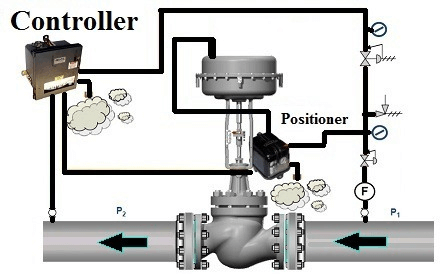
Maximize Energy Savings and Comfort With Advanced Building Automation Controls
In the realm of modern style and facility monitoring, the integration of sophisticated structure automation controls stands as an essential advancement. By taking advantage of the power of automation, structures can adjust, respond, and evolve in ways that were when unbelievable.
Energy Effectiveness Conveniences
Energy efficiency advantages can significantly lower power usage and operational costs in structures. Energy-efficient systems, such as sophisticated building automation controls, can optimize the usage of sources like air conditioning, heating, and lights, leading to reduced power expenditures over time.
Additionally, improved power effectiveness can lengthen the life-span of structure equipment and systems. By running much more efficiently, HVAC systems, light, and other building elements experience less damage, resulting in decreased upkeep and replacement prices. In addition, energy-efficient buildings frequently regulate greater residential property values and rental prices, providing long-lasting economic advantages to owners.
Moreover, power effectiveness can boost owner comfort and performance. Correctly managed indoor settings with ideal lights and thermal conditions produce an even more enjoyable and conducive work area, bring about improved staff member contentment and performance. In general, the power performance benefits related to advanced building automation controls are diverse, incorporating expense financial savings, environmental stewardship, and owner well-being.
Enhanced Convenience Control
Enhancing convenience control in structure settings requires an advanced assimilation of advanced automation systems for optimal owner well-being. By using innovative building automation controls, facilities can tailor the indoor atmosphere to meet the particular requirements and choices of passengers. These systems make it possible for accurate regulation of ventilation, temperature, and illumination, producing a comfortable and efficient environment. Resident fulfillment and productivity are very closely linked to thermal comfort, making it necessary to have systems in position that can adapt to transforming problems in real-time.
Enhanced convenience control goes past basic temperature adjustments. It consists of functions such as customized setups, tenancy sensors, and all-natural light utilization to produce a dynamic and receptive atmosphere. By including these innovative controls, structures can not only improve convenience yet likewise improve power efficiency by maximizing system procedures based on real occupancy and usage patterns. Inevitably, focusing on resident convenience with innovative automation systems results in an extra delightful and much healthier interior environment.
Functional Performance Improvements

Furthermore, the application of real-time surveillance and analytics devices allows building operators to determine energy inefficiencies and functional abnormalities without delay. By continuously keeping an eye on power use patterns and system performance metrics, adjustments can be made in real-time to enhance power consumption and make sure peak functional efficiency. control valves. Furthermore, integrating need action strategies right into building automation controls can additionally boost operational effectiveness by dynamically readjusting power use based upon grid conditions and prices signals
Indoor Environment Optimization
Reliable interior environment optimization is a fundamental aspect of building automation controls, guaranteeing passengers' convenience and wellness while optimizing energy savings. By using sophisticated sensors and controls, developing automation systems can constantly adjust and check temperature, moisture degrees, air high quality, and air flow to create an ideal indoor environment. Maintaining comfortable and constant conditions not just boosts occupant complete satisfaction but also enhances performance and total health.
Indoor climate optimization additionally plays an important function in energy efficiency. By fine-tuning ventilation, air conditioning, and heating systems based on real-time information and occupancy patterns, building automation controls can dramatically lower power usage - control over here valves. For circumstances, implementing strategies such as demand-controlled air flow and thermal zoning can assist reduce energy waste while making sure that each location of the building obtains the essential conditioning.

Sustainable Atmosphere Creation
Structure automation regulates not only enhance indoor climate conditions for power performance and passenger convenience yet likewise lay the foundation for creating a lasting environment through strategic monitoring of systems and resources. By integrating innovative structure automation technologies, such as sensors, actuators, and smart software program, centers can keep track of and change power usage in real-time to decrease waste and minimize their carbon impact. These systems allow predictive maintenance, recognizing prospective problems prior to they rise and optimizing tools performance to boost long life and efficiency.
Moreover, lasting environment production extends past energy administration to incorporate water conservation, waste decrease, and indoor air high quality improvement. Structure automation controls can manage water usage, spot leakages, and guarantee correct garbage disposal methods, contributing to overall sustainability efforts. Furthermore, by keeping an eye on and controlling air flow and filtering systems, these innovations boost resident wellness and performance while lowering power consumption connected with heating and cooling procedures.
Conclusion
In conclusion, advanced building automation controls deal substantial benefits in terms of power financial savings, convenience control, operational effectiveness, interior environment optimization, and developing a sustainable setting. By implementing these controls, buildings can accomplish optimum efficiency while minimizing power usage and enhancing owner convenience. It appears that making use of sophisticated automation innovation is vital in boosting structure efficiency and developing an extra sustainable future.
Power Click This Link performance advantages can significantly reduce power usage and functional expenses in structures. Generally, the power effectiveness benefits associated with advanced building automation controls are complex, incorporating expense savings, environmental stewardship, and occupant well-being.
In addition, including demand response strategies right into building automation controls can further boost operational effectiveness by dynamically changing power use based on grid conditions and rates signals.
Building automation regulates not just maximize interior environment conditions for energy a fantastic read efficiency and resident comfort yet likewise lay the structure for creating a lasting atmosphere through calculated administration of systems and resources.In final thought, progressed structure automation manages deal considerable benefits in terms of energy financial savings, comfort control, operational effectiveness, interior climate optimization, and developing a sustainable environment.